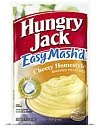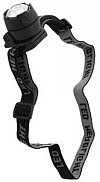Just finished watching this 30-minute video on hiking the Appalachian Trail.
It seems every Appalachian Trail video touches something deep within the human psyche. Many folks after watching an Appalachian Trail video have the sense of "Me too! I want to hike the Appalachian Trail!"
Every spring over 1,000 people attempt a full thru hike, yet only 20% succeed. The class of 2010, as they're known, is no exception. Several hikers have already became discouraged and left the trail. Some leave for psychological reasons, while others leave for medical reasons, usually an injured knee or leg. Those out due to injury will likely one day return and continue their journey. If not this year, then perhaps as section hikers they'll one day attain their goal.
Friday, May 14, 2010
Thursday, May 13, 2010
Trail Journals: Following BigHodag Online
We're close enough to our hike that we opened an account at TrailJournals.com. This is a well thought out journal service for both through hikers and section hikers needing a trail journal. A trail journal account includes a journal, gear list, photo album, a video album and a guest book. TrailJournals.com is not free, but is donation financed. The suggested donation of $25 is a fair price for the value.
We've largely finished our TrailJournals gear list and have uploaded pictures of all our major gear, save a vintage aluminum pot. One of the less obvious steps in loading gear is picture first, text second. One you save your gear details there is no way to add a photo except delete and re-enter. Also, you don't need photos of your actual gear as chances are someone else is using the same gear and has already uploaded the photo. Its fascinating scrolling down a list of hundreds of stoves, followed by hundreds of cups.
We have also added three pre-hike trail journal entries. There's a short list of requirements to have one's trail journal "go public". Three journal entries is required to trigger appearing in the hiker listings.
We plan to ask a family member to transcribe our TrailPhone audio trail journal entries to our written trail journal. The section we are hiking doesn't include many opportunities for a section hiker to lollygag and update a trail journal. We also are not taking a smartphone or other technology for journaling from camp.
As we are taking disposable cameras for our section hike, photos of our section hike will not be available until after we are back home and the film developed and transferred to CD-ROM.
We have also setup a personal YouTube channel. We plan to take our photos and create the obligatory slide show video showing the same highlights from our section hike as everyone else - Weaverton Cliffs, Annapolis Rocks, Correspondents Memorial, etc. Chevy Chase driving in circles in London comes to mind: "Look everyone, Washington Monument!"
By the way, once this post cycles off the homepage, you'll still be able to find mine and other interesting hiker journals in the bottom of the green trail section on the right side. Oh, look! There they are now.
We've largely finished our TrailJournals gear list and have uploaded pictures of all our major gear, save a vintage aluminum pot. One of the less obvious steps in loading gear is picture first, text second. One you save your gear details there is no way to add a photo except delete and re-enter. Also, you don't need photos of your actual gear as chances are someone else is using the same gear and has already uploaded the photo. Its fascinating scrolling down a list of hundreds of stoves, followed by hundreds of cups.
We have also added three pre-hike trail journal entries. There's a short list of requirements to have one's trail journal "go public". Three journal entries is required to trigger appearing in the hiker listings.
We plan to ask a family member to transcribe our TrailPhone audio trail journal entries to our written trail journal. The section we are hiking doesn't include many opportunities for a section hiker to lollygag and update a trail journal. We also are not taking a smartphone or other technology for journaling from camp.
As we are taking disposable cameras for our section hike, photos of our section hike will not be available until after we are back home and the film developed and transferred to CD-ROM.
We have also setup a personal YouTube channel. We plan to take our photos and create the obligatory slide show video showing the same highlights from our section hike as everyone else - Weaverton Cliffs, Annapolis Rocks, Correspondents Memorial, etc. Chevy Chase driving in circles in London comes to mind: "Look everyone, Washington Monument!"
By the way, once this post cycles off the homepage, you'll still be able to find mine and other interesting hiker journals in the bottom of the green trail section on the right side. Oh, look! There they are now.
Labels:
journals
Tuesday, May 11, 2010
Backpacking Food Ideas: Instant Mashed Potatoes
 We were at Big Lots the other day and saw some packs of Hungry Jack Cheesy Homestyle Easy Mash'd Potatoes for just sixty cents. While instant mashed potatoes is not a new backpacking food idea, cheesy flavored mashed potatoes is a newer backpacking food idea.
We were at Big Lots the other day and saw some packs of Hungry Jack Cheesy Homestyle Easy Mash'd Potatoes for just sixty cents. While instant mashed potatoes is not a new backpacking food idea, cheesy flavored mashed potatoes is a newer backpacking food idea.We recall back in the 1970's when we started backpacking that only unflavored potato flakes were available. We would fortify our spuds with texturized vegetable protein powder and powdered milk and add a crumbled bullion cube or powder to the mix for "gravy". Just add water! Revolutionary at the time. Problem was, after instant potatoes twice daily for a 3-day weekend trip, one was "mashed out." We were so mashed out we didn't even backpack instant potatoes for several decades following.
So we bought a bag to try at lunch.
As we are close to our upcoming section hike, we lunched as we would on the trail. We grabbed the mess kit, potatoes, water bottle, and a pint-sized plastic cup. The details on the spuds said to add to two cups of hot water. We poured a pint (2 cups) of water into our pint cup and microwaved it. (Didn't think the boss would appreciate letting our super cat stove blaze away in the break room.) While the water was heating to a near boil, we transferred the spuds into a freezer bag and mixed. Its looks like the cheese and potatoes are added separately at the processor as there was segregated white stuff and orange stuff. We then placed or freezer bag in our homemade packing envelope cozy ad got out our plastic measuring cup. We measured out two cups of hot water and stirred the potatoes with our trail spork per directions. The potatoes quickly began to thicken. Once it looked like the water and potatoes were well intermixed, we zipped our bag shut (the zipper failed - a first. Good thing it was thick potatoes and not runny soup.) We waited the requisite 5 minutes and discovered that these potatoes, like tomato sauce, has thermodynamic properties for retaining heat.
The potatoes were delish! As the day is cold and wet, the overly hot potatoes were a welcome treat. We did discover that the bag makes four servings and that between serving two and three, one has probably consumed all the instant potatoes one can stand, even if they are cheesy. For trail use, we'll probably split a bag in half with two servings being one meal.
Also, knowing that the potatoes have a tendency to be monotonous when eaten alone, we diced up a cheddar cheese stick and a beef stick and mixed them into the potatoes. While the cheese added little to the taste, the beef stick really brightened things up. Rather than cubing the beef stick, next time we'll try thin slices so there are more beef bits.
We'll probably take along one bag of Hungry Jack Cheesy Homestyle Easy Mash'd Potatoes for two suppers. Likely we'll also pack a beef stick to slice into each bag.
Disclosure: We select and purchase the product(s) reviewed. We have no material connection to either the manufacturer nor the retailer(s).
Labels:
food
Monday, May 10, 2010
Backpacking Light: The Backyard Shakedown
While one of the secrets to backpacking light is to select lightweight gear, the greater secret is to know how to use your light backpacking gear and to ensure that you have the right mix of light backpacking gear. We're still trying to settle on a sleeping system for a late Spring section hike along the middle of the Appalachian Trail. We bought a 1-1/2 lb poncho liner to try as a replacement for a larger 3 lb sleeping bag. So, we decided to hold a dress rehearsal in the backyard.
We "hiked" our loaded lightweight Arrowhead backpack to the backyard about 10 p.m.. Using the mini LED headlight, we setup the GT lightweight travel hammock and Slap Strap micros. Rigged the camo tarp above the hammock and staked the corners down. Put the foam pad into the hammock; inflated our travel pillow and tucked it between tarp and tarp line; and covered the hammock with the poncho liner.
We also bear bagged our food bag using the PCT technique and a low hanging branch on the apple tree. Not high enough for bears, but safe from rodents, possums, and the family dog. (The trail is not the place to discover that one has forgotten, or not mastered, how to bear bag ones precious food.) We then clipped the largely empty backpack to the head end of the hammock to get it off the ground.
We sat on the hammock and donned our lightweight 50/50 long underwear over our shorts and t-shirt. Placed our shoes under the hammock and laid down. Tucked a corner of the poncho liner under the foot end of the pad and pulled it snug. Material was overhanging and touching the ground - not good. Decided to tuck the extra material on the sides under the foam pad as well. We were comfortably warm and went to sleep.
We were awaken at about four or five in the morning. 8 mph winds were lifting the tarp and blowing across the top of the poncho liner. We could actually feel the heat leaving the enclosed space around us. Also, we noted our foam pad had slipped and was now hanging over the hammock and beyond the tarp. Got out; replaced the foam pad; and re-staked the tarp closer to the hammock and ground. Also swung the backpack under the hammock and fastened the waist belt over the hammock to help keep the pack out of any rain. Went back to sleep after re-tucking the poncho liner.
We awoke after sunrise to rain hitting the tarp. Snivel meter read 54F. We were comfortable, unlike an earlier field test of a small,lightweight, fleece sleeping bag. Checked for rain penetration. Inside of tarp was dry, as were the hammock, pad, and poncho liner. We then decided to practice breaking camp in the rain. Retrieved the backpack. Stuffed the poncho liner into a compression bag and packed it away. Rolled up the foam pad and placed next to pack. Grabbed the hammock system stuff sack and stuffed the hammock and the two Slap Strap micros. Decided to leave the tarp and food bag hung until they had a chance to air dry. Had this been an actual long distance hike, we could have packed up while keeping everything critical dry.
Other than buying a new foam pad to cut down to fit the hammock, we are done acquiring and testing gear. We've settled on our cooking system: vintage aluminum pot w/lid and handle; super cat alcohol stove, spork, plastic bowl with lid, cup, and a freezer bag cozy. We plan to just boil water and use freezer bag cooking for breakfast and supper. While monitoring the weather, we'll plan our meals and start shopping for food.
Next weekends forecast is for three days of rain. We may decide to practice setting up camp in the rain as we need to make mistakes now and not later on the trail, away from the safety of home and hearth.
Our current gear list is located just below the photo and biography in the lower right blue area.
We "hiked" our loaded lightweight Arrowhead backpack to the backyard about 10 p.m.. Using the mini LED headlight, we setup the GT lightweight travel hammock and Slap Strap micros. Rigged the camo tarp above the hammock and staked the corners down. Put the foam pad into the hammock; inflated our travel pillow and tucked it between tarp and tarp line; and covered the hammock with the poncho liner.
We also bear bagged our food bag using the PCT technique and a low hanging branch on the apple tree. Not high enough for bears, but safe from rodents, possums, and the family dog. (The trail is not the place to discover that one has forgotten, or not mastered, how to bear bag ones precious food.) We then clipped the largely empty backpack to the head end of the hammock to get it off the ground.
We sat on the hammock and donned our lightweight 50/50 long underwear over our shorts and t-shirt. Placed our shoes under the hammock and laid down. Tucked a corner of the poncho liner under the foot end of the pad and pulled it snug. Material was overhanging and touching the ground - not good. Decided to tuck the extra material on the sides under the foam pad as well. We were comfortably warm and went to sleep.
We were awaken at about four or five in the morning. 8 mph winds were lifting the tarp and blowing across the top of the poncho liner. We could actually feel the heat leaving the enclosed space around us. Also, we noted our foam pad had slipped and was now hanging over the hammock and beyond the tarp. Got out; replaced the foam pad; and re-staked the tarp closer to the hammock and ground. Also swung the backpack under the hammock and fastened the waist belt over the hammock to help keep the pack out of any rain. Went back to sleep after re-tucking the poncho liner.
We awoke after sunrise to rain hitting the tarp. Snivel meter read 54F. We were comfortable, unlike an earlier field test of a small,lightweight, fleece sleeping bag. Checked for rain penetration. Inside of tarp was dry, as were the hammock, pad, and poncho liner. We then decided to practice breaking camp in the rain. Retrieved the backpack. Stuffed the poncho liner into a compression bag and packed it away. Rolled up the foam pad and placed next to pack. Grabbed the hammock system stuff sack and stuffed the hammock and the two Slap Strap micros. Decided to leave the tarp and food bag hung until they had a chance to air dry. Had this been an actual long distance hike, we could have packed up while keeping everything critical dry.
Other than buying a new foam pad to cut down to fit the hammock, we are done acquiring and testing gear. We've settled on our cooking system: vintage aluminum pot w/lid and handle; super cat alcohol stove, spork, plastic bowl with lid, cup, and a freezer bag cozy. We plan to just boil water and use freezer bag cooking for breakfast and supper. While monitoring the weather, we'll plan our meals and start shopping for food.
Next weekends forecast is for three days of rain. We may decide to practice setting up camp in the rain as we need to make mistakes now and not later on the trail, away from the safety of home and hearth.
Our current gear list is located just below the photo and biography in the lower right blue area.
Tuesday, May 4, 2010
Timber Creek mini LED headlight
 During our recent backpacking trip to Cane Creek State Park, one of the new toys we tested was a Timber Creek mini LED headlight. The Timber Creek mini LED headlight sells for about six dollars at the local Academy sports store. A bargain compared to the more expensive headlamps appearing on the gear lists of many Appalachian Trail through hikers. We suppose there is some cachet to sporting a twenty dollar Petzl LED headlight on the A.T., but we're not made of money and our family is fairly happy when we use our modest salary to purchase food and electricity.
During our recent backpacking trip to Cane Creek State Park, one of the new toys we tested was a Timber Creek mini LED headlight. The Timber Creek mini LED headlight sells for about six dollars at the local Academy sports store. A bargain compared to the more expensive headlamps appearing on the gear lists of many Appalachian Trail through hikers. We suppose there is some cachet to sporting a twenty dollar Petzl LED headlight on the A.T., but we're not made of money and our family is fairly happy when we use our modest salary to purchase food and electricity.So how does the little six dollar Timber Creek mini LED headlight perform? Fairly well. The LED headlight comes partially assembled with two button batteries and an elastic head band. The batteries are already installed, but one must remove a small piece of plastic which blocks the circuit. Also, one must thread the headband onto two small clips on either side of the LED headlight.
Once assembled, the LED headlight is very comfortable to wear. Its light weight and the elastic headband acts as a cushion against the forehead. No hard cold plastic, but rather a warm, soft cushion. The LED headlight is turned on and off by a push button along the rim of the headlight. Depending on the position of the LED holder when screwing back together, the button will be either at the top or the bottom. The button is encased in a rubber boot that provides a good degree of water resistance. The plastic case attached to the headband also includes a built in hinge so the LED headlamp can be tilted from forward to almost straight down. This was a very useful feature when sitting at a picnic table in the dark cooking.
We've since used the Timber Creek mini LED headlight on several backyard hammock camping shake downs. The LED headlight has never disappointed us. Due to its inexpensive cost, we plan to purchase several more for family members and to keep around the house for power outages.
TIP 1: When arriving in camp, put on your headlight and wear it around your neck as a necklace, Then, you'll know exactly where it is once darkness begins.
TIP 2: Wear your headlight around your neck when sleeping. Then, if a midnight cat hole calls, you can quickly find your light and take care of business.
Subscribe to:
Posts (Atom)











